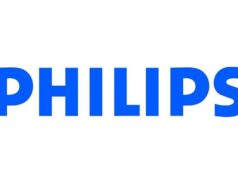 The mHealth Screening To Prevent Strokes (mSToPS) randomised clinical trial showed that home-based wearable electrocardiogram (ECG) sensor patch monitoring, compared with delayed monitoring, resulted in a higher rate of atrial fibrillation (AF) diagnosis after four months. Wearing an ECG patch (Zio, iRhythm) for two weeks was equivalent to 12 months of fortnightly monitoring.
The mHealth Screening To Prevent Strokes (mSToPS) randomised clinical trial showed that home-based wearable electrocardiogram (ECG) sensor patch monitoring, compared with delayed monitoring, resulted in a higher rate of atrial fibrillation (AF) diagnosis after four months. Wearing an ECG patch (Zio, iRhythm) for two weeks was equivalent to 12 months of fortnightly monitoring.
For approximately 20% of individuals who experience a stroke due to atrial fibrillation the occurrence of AF was not diagnosed until the time of their stroke or shortly afterward. Improved AF diagnosis and treatment could reduce the risk of stroke.
The study looked at 2,659 individuals with an increased risk of atrial fibrillation (AF) and compared immediate monitoring using a self-applied ECG patch to delayed ECG monitoring for four months. The results showed a significantly higher rate of AF diagnosis at four months in the wearable ECG cohort compared to the delayed ECG cohort (3.9% vs 0.9%).
At one-year, primary results showed that AF was newly diagnosed in 6.7% of patients who were actively monitored by the home based wearable ECG monitor compared to 2.6% in the observational control group receiving routine care. In addition, 4.0 % of patients in the home-based ECG monitor group were found to have potentially actionable arrhythmias other than AF including ventricular tachycardia, pause, atrioventricular block, and symptomatic supraventricular tachycardia.
Researchers at the Scripps Translational Science Institute conducted the study in partnership with collaborators, Aetna and Janssen Pharmaceuticals.
“Our study shows an almost threefold improvement in the rate of diagnosis of AF in those actively monitored compared to usual care,” said Steven Steinhubl, director of digital medicine at Scripps Translational Science Institute and an associate professor at The Scripps Research Institute (La Jolla, USA). “Diagnosing AF more effectively can enable the initiation of effective therapies and help reduce strokes and death.”
Continuous home based ECG monitoring led to significant change in clinical treatment of the actively monitored group including initiation of anticoagulation therapies (5.7%), antiarrhythmic medications (0.8%), and pacemaker placement (0.8%). Patients receiving anticoagulation for AF appeared to fulfil current clinical guidelines for appropriateness and need. Mean wear time for the ECG patch was 12 days with 98% analysable ECG data.
One-third of individuals were enrolled via a web-based platform to undergo either immediate or delayed active ECG monitoring at home for up to four weeks with a Zio XT patch monitor (two-week monitoring periods spaced four months apart). Each monitored participant was matched with two non-monitored participants with a similar CHA2DS2-VASc, a standardised stroke-risk assessment score, to act as controls. The study looked at time to first diagnosis of AF and its clinical consequences for the active monitoring cohort as well as the cohort undergoing usual care.
Commenting on these findings in an editorial in JAMA, Benjamin A. Steinberg and Jonathan P. Piccini (University of Utah and Duke University, USA) write: “The mSToPS data suggest that immediate, continuous screening for two weeks may be equivalent to weekly or biweekly, 30-second rhythm monitoring over a 12-month period in a population of similar risk. This is further supported by the timing of detection in the mSToPS cohort: among patients with AF detected on two-week monitoring, nearly one-quarter had AF on day one and nearly 40% had AF detected within the first three days (including both the early and delayed active monitoring groups).”









